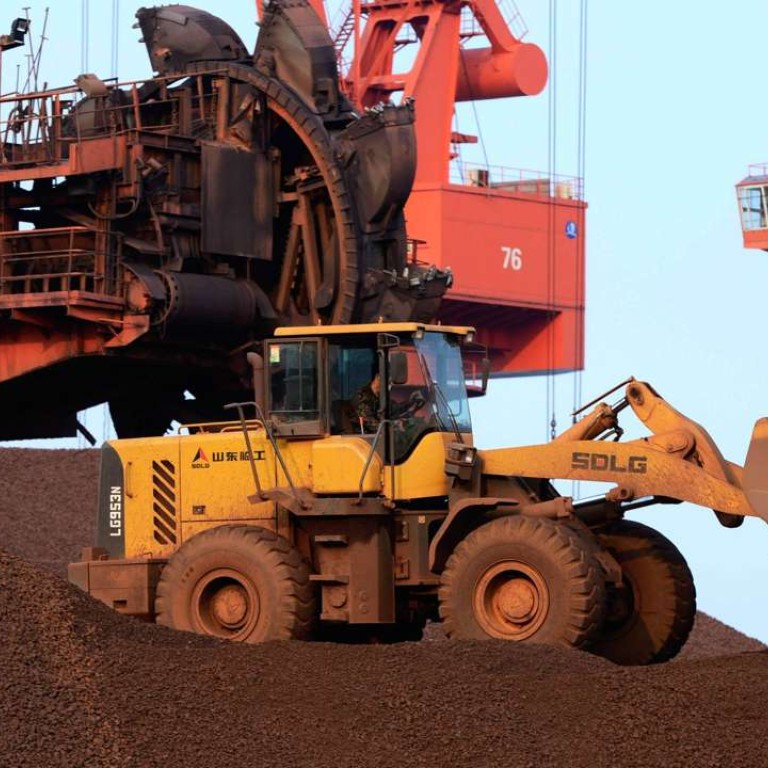
Russian iron ore miner IRC seeks more penalties from Chinese contractor for project delays
Talks are ongoing with China National Electric Engineering to resolve issue, says top official
Commodities producer IRC is planning to impose further penalties on China National Electric Engineering (CNEEC), the Chinese contractor which is developing its iron ore mine in Russia’s Far East Siberia, after inordinate project delays hurt its business prospects.
IRC said the project, which was essentially targeted at the northeast China market has missed its original commissioning date by over two years amid the severe slump in ore prices. The move comes close on the heels of the firm, which raised US$240 million via a Hong Kong initial public offering six years ago, almost entering into a binding sales contract with a potential customer, after “intentionally” refraining from doing so earlier to “get the best price”, said chief financial officer Danila Kotlyarov.
“Our production volume is not big, so we are not under pressure to commit to long-term sales contracts ... there is plenty of demand in northeast China,” he told the South China Morning Post in an interview.
The company aims to supply steel mills that currently buy ore from other Russian and Chinese producers or importers via Tianjin and Qingdao ports, he added. IRC had in the second quarter of this year mothballed its loss-making Kuranakh mine that produced 1.1 million tonnes of processed ore last year.
Despite halving production costs – excluding fixed costs like asset depreciation – to US$54.9 a tonne last year from US$107.1 in 2014, thanks to the rouble’s depreciation against the US dollar, the mine has been loss-making as average ore prices fell by 44 per cent to US$51 last year.
After sinking as low as around US$42 early this year, prices recovered to US$70 in late April as steel prices were pushed up by speculators on expectations of a seasonal rise in construction activities in China.
But the rally was short-lived, with prices falling back to around US$48 in early June before climbing to around US$ 55 late last week.

“Prices were on an upswing from the beginning of the year to April on hopes of an improving Chinese economy, however ... a meaningful recovery is yet to come,” said Chris Chen, a metals and mining analyst at HSBC, adding that port inventories were at its highest since late 2014.
After ore prices started rising again in the past few weeks, ANZ analysts said in a report that the momentum was driven by a recovery in steel prices. However, they believe the rally “is reaching its limit” since physical buyers were “few and far between” and prices will likely be limited to a tight range.
Since April, IRC has been focusing on the final-stage pre-comissioning trial runs at its new Kimkanskoye & Sutarskoye (K&S) mine with targeted annual output of 3.2 million tonnes.
IRC late last month said commissioning of the plant has been delayed from the second quarter to the third due to “normal teething issues related to the process of commissioning” which CNEEC and IRC are working together to resolve.
Our production volume is not big, so we are not under pressure to commit to long-term sales contracts
In September 2014, IRC said it had agreed for compensation from CNEEC after the latter missed the June 30 K&S commissioning deadline that year, in the form of a US$19.5 million discount on the amount billable by CNEEC. An additional undisclosed penalty is chargeable on delays beyond the revised December 31, 2014 deadline.
Kotlyarov said penalties for the further delays are under discussion.
The delay also forced IRC to raise some US$50 million via an open rights share offer to all its shareholders, and negotiate successfully certain waivers from project finance creditor Industrial and Commercial Bank of China, which effectively gave IRC a six-month cash drain deferral in its repayment obligations on a US$276 million loan.
Although IRC had planned a second-phase development for K&S that could add 3.1 million tonnes of capacity, Kotlyarov said: “While we have space to expand the project’s output capacity, the investment required is significant ... I don’t think in the current environment there would be any interest [from anyone] to invest in additional iron ore capacity.”
Asked how K&S’ prospective return has changed since IRC was listed in Hong Kong in 2010, he said: “The whole universe has changed ... life has changed significantly for everybody.”
He noted that iron ore fetched over US$140 a tonne in 2010 but now is hovering at just above US$50, amid oversupply as rising low-cost exports from Australia and Brazil to China gradually replaced high-cost Chinese supply.
Meanwhile, IRC’s production costs have fallen from US$50 a tonne to around US$35 thanks to cost cutting and the rouble’s depreciation against the US dollar. It also slashed its administration and management costs from US$26.2 million in 2012 to US$10 million last year, after losing a few key senior staff. Compensation paid to its directors fell to US$2.4 million last year from US$7.75 million in 2012.
Kotlyarov said IRC is still in talks with Tianjin-based unlisted commodities trader General Nice Development, the mainland’s largest privately owned steel smelting raw materials trader controlled by Cai Suixin. The talks are on the latter fulfilling a commitment to complete the outstanding US$38 million portion of a US$238 million agreement struck in 2013 to buy IRC shares at 94 HK cents each.
IRC’s shares closed at 12.4 HK cents on Thursday, the final day of weekly trade ahead of the holiday weekend, down 93.1 per cent from its initial public offering price of HK$1.8.

